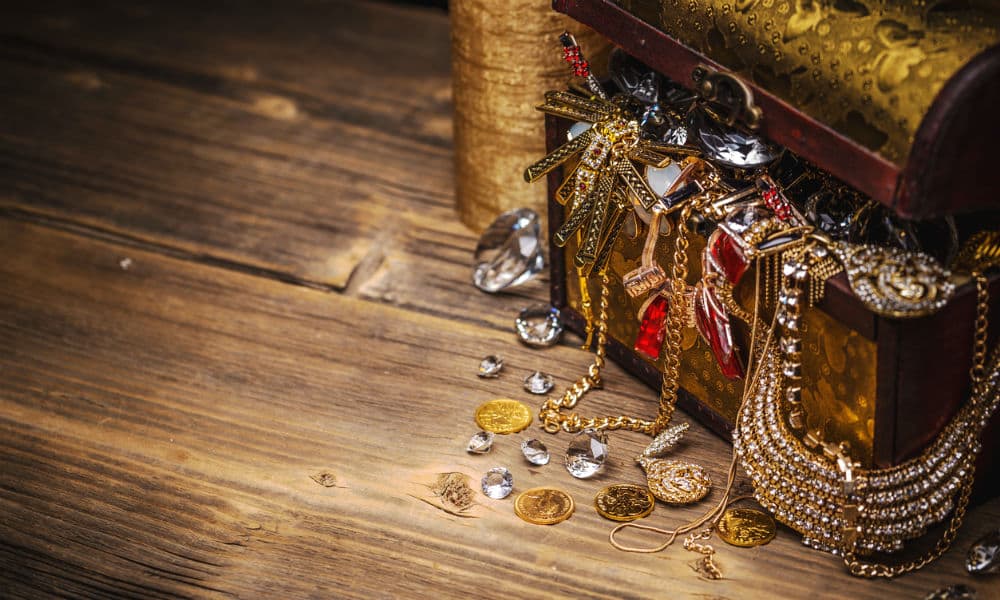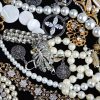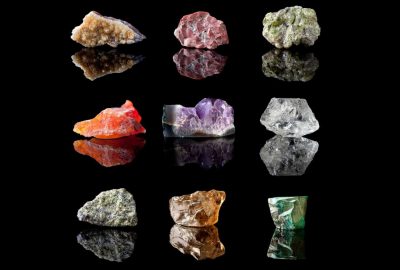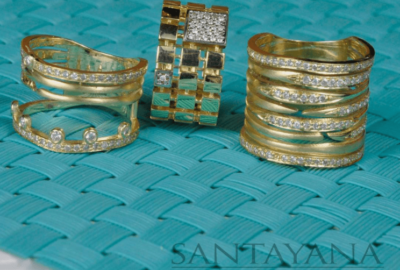Industry News
Last year, a friend of mine got engaged to her longtime boyfriend and excitedly posted a photo of her vintage opal engagement ring online. It was beautiful, but I was worried: Opals are the silk blouse of the jewelry world—gorgeous, feminine, and incredibly temperamental. They require extraordinarily gentle handling to keep them looking their best, so I emailed my friend to tell her so (I offered her my best wishes too, I’m not that myopic!).
For all that I know about the care and cleaning of jewelry, from opals to diamonds and vintage to costume pieces, I’ve got nothing on jewelry writer and historian Monica McLaughlin, who writes the popular Estate Jewelry series for The Hairpin. I talked to Monica about what she uses to clean her baubles, the difference between caring for hard and soft gemstones, and why she hates the fact that I clean my diamond wedding ring with denture tablets.
The Basics of Jewelry Cleaning
Monica advises that, when it comes to cleaning jewelry, less is more: “My standbys are soft, clean toothbrushes and makeup brushes, a soft cloth (actually an old white T-shirt!), and water. I tread very lightly and mess with each piece as little as possible. Only if something starts to look a little dull will I give it a light wash with a tiny bit of non-detergent soap and a lot of water.”
Silver jewelry for can be cleaned with either silver polish or a silver polishing cloth, like Goddard’s. Monica, who is a collector not only of jewelry but also of antique silver serving pieces, also recommends Simichrome Polish, which an antique dealer she worked for turned her onto: “Just a tiny little dab is all it takes to get a gorgeous mirror finish on your piece!”
Gold jewelry that’s been tarnished can also be cleaned with a jewelry cloth, like Connoisseurs Gold Polishing Cloth, but be sure that the one you’re using is safe for gold—and never, ever use silver polish on gold jewelry.
As for storage, keeping delicate items in their original boxes will help protect against damage caused by contact with other pieces. If your collection includes delicate necklaces in particular, investing in a stand they can hang from will keep them from becoming tangled.
The Problem with Denture Tablets
Dissolving a denture tablet in warm water is my go-to method for cleaning my wedding bands. It makes short work of returning dulled rings to sparkler status on the cheap (a box of 90 tablets costs around $6), but I wanted to get Monica’s official take on the practice: “I’m against the denture tablet method, sorry! The Gemological Institute of America discourages it because the chemicals in the cleanser can be harmful to the metal setting of the ring. They can weaken or erode the alloys that make up the setting, so while the diamond itself is fine, the band and/or prongs can be weakened. I live in fear of looking down at a ring and seeing a missing stone, so I would always err on the side of caution and stay away from this technique.”
Instead, Monica recommends mixing a solution of 1 cup water with 1/4 cup ammonia or using a glass cleaner like Windex diluted with water as an overnight soaking agent. “Give the ring a light scrub with a soft brush the next day, pat it dry, and it should be good to go,” she adds. That solution is safe for cleaning both gemstones and their metal settings, as well as plain gold and silver pieces.
Understanding Hard Gems v. Soft Stones
It’s important to know what stones are hard versus soft before cleaning your bling, since the softer ones need gentler handling. As Monica explains, “Diamonds, rubies, and sapphires are the hardest gemstones, so they can handle the ammonia and water treatment. If they’re really gross, you can let them soak overnight; if not, you can just give them a quick dip-and-brush.”
For soft gemstones like pearls, opals, coral, and turquoise, Monica advises that you use water and a very small amount of mild, non-detergent soap like Kirk’s Castile paired with a clean, unused makeup brush to lightly scrub the piece.
Monica also reminded me of something I hadn’t thought of since my boarding school days: “The rule of thumb with pearls is ‘last thing on, first thing off.’ Pearls are highly absorbent and will suck up anything you put on yourself—lotion, hairspray, perfume, whatever. Shield them by putting them on after you’re through with your beauty routine, and then take them off as soon as you get home. To keep pearls in good shape, give them a quick swipe with a soft, damp cloth after you wear them, and get them re-strung every three years, or every year, if you wear them multiple times a week. Some dealers recommend washing pearls in cool water, but that soaks the string, which may weaken it and shorten its lifespan.”
The delicate handling of softer gems extends to storage practices, too. Pearls and opals in particular need air circulation and a certain amount of exposure to humidity to ensure they don’t crack, so they should never be stored in an excessively dry environment. Your soft gems should also be stored separately from other pieces to prevent the scratching and damage that can occur through contact with other things in your jewelry box.
The Particulars of Antique and Costume Jewelry
If you, like Monica, are an avid collector of antique pieces or if you’ve inherited older jewelry from a family member, you lucky thing you, take the time to find a jeweler in your area who has experience working with old stuff! Ultrasonic cleaners are to be avoided at all costs—they’re safe for most contemporary jewelry, but can cause damage to delicate antique pieces.
When it comes to costume jewelry, you can follow the same instructions for cleaning the real deal, but need to avoid soaking those pieces for long periods of time, as prolonged exposure to water and cleaning agents can break down the glue used to affix fake gemstones to settings. Another great option for costume pieces is the use of jewelry cloths, which clean without water.













































Leave a reply